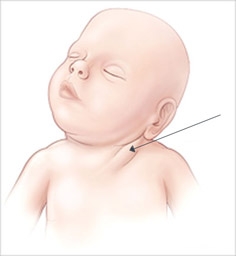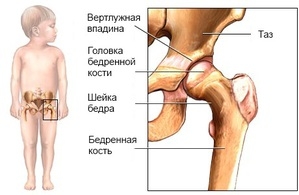Some of the most well-known early orthopedic disorders in children are torticollis, hip dysplasia, clubfoot, flat feet, and some forms of curvature of the spine. This article will focus on the first two deviations, their identification and elimination.
In the early stages of development, they can be eliminated by sparing methods of therapy. Late diagnosed dysplasia and torticollis may require surgery. When and how is it possible to identify orthopedic problems, if any?
What are the main orthopedic problems in newborn babies?
Torticollis – one of the orthopedic problems, the appearance of which is caused by a failure in the development or the occurrence of a spasm of the cervical muscles located on one side. Failure in the development of the hip joint is also a known orthopedic abnormality. It is associated with an incorrect position of the femoral head.
Torticollis and hip dysplasia are common orthopedic disorders. But they appear differently. For example, dysplasia, unlike torticollis, does not appear so quickly and clearly. Even experienced orthopedic doctors will not always be able to identify it during the initial examination of the child. Torticollis can be diagnosed even in the first month of a person's life. Its manifestation has its own signs and clinical symptoms. Hip dysplasia also has its manifestations, which also differs in its classification, determined by the position of the femoral head.
Timely detection of such orthopedic problems is very important, since the formation and development of the musculoskeletal system takes place from birth to 15 years of age. The elimination of its violations, carried out on time, is the key to the health and beauty of a person.
Diagnosis and treatment of an orthopedic problem such as torticollis
As we said above, torticollis – one of those orthopedic problems that can be detected in time. If its occurrence is associated with the peculiarities of the development of the child in the womb, then with a high probability it is found even in a one-month-old baby. However, one should not miss the fact that there is also an acquired form of torticollis, which is also important to diagnose in a timely manner.
 Due to the early manifestation of the disorder, as a rule, torticollis is detected even in the maternity hospital. It is also possible to identify it at a somewhat older age of the baby: up to three months in boys and up to six in girls.
Due to the early manifestation of the disorder, as a rule, torticollis is detected even in the maternity hospital. It is also possible to identify it at a somewhat older age of the baby: up to three months in boys and up to six in girls.
Clinically, this deviation is noticeable in the movement of the child's head, which, in the presence of symptoms of torticollis, is unilateral. A little later, the head also deviates slightly back. And by about six months, asymmetry and curvature of the cervicothoracic part of the spine is already noted.
The treatment of torticollis consists of the following main points:
- periodic shifting of the infant to different parts of the bed (if torticollis has developed as a result of habit);
- massage;
- special exercises;
- physiotherapy treatments;
- if previous – surgery.
Hip dysplasia is a common orthopedic problem in infants

Hip dysplasia does not show up immediately. This deviation is associated with the incorrect position of the femoral head in the joint. The largest percentage of infants with this type of dysplasia – firstborns (60%).
Up to four months, such orthopedic problems can be detected by ultrasound. And already from 6 months, dysplasia will manifest itself visually: the asymmetry of the legs and skin folds will become noticeable.
Types of hip dysplasia:
- Anti-luxation: associated with an unstable position of the femoral head in the joint.
- Subluxation: the femoral head is poorly fixed in the acetabulum, periodically shifting and returning back into it.
- True dislocation: the bony head is initially outside the joint.
According to statistics, such a violation in the first two forms develops in one out of 100 births, and the last – one of 800-1000.
An effective way to eliminate such an orthopedic problem is to use Pavlik's stirrups. If such treatment was not prescribed before the age of six months, the femur is repositioned. After 1.5 years, surgery may be prescribed.






Add a comment